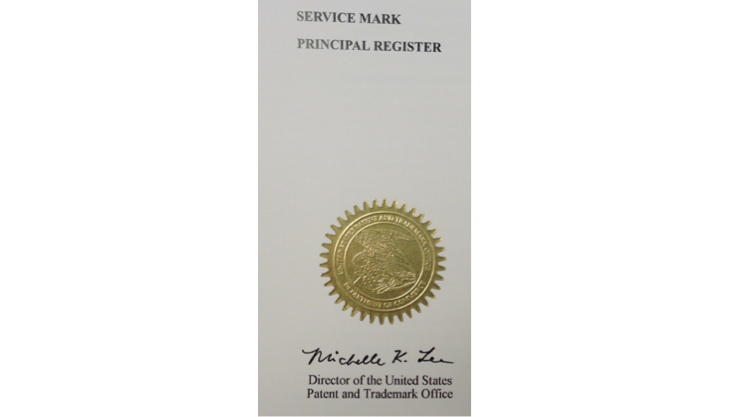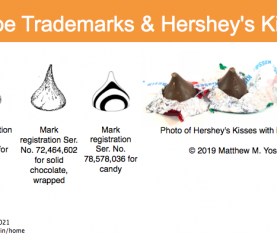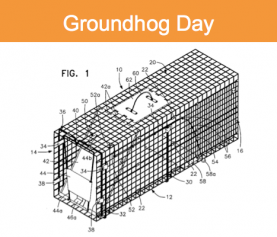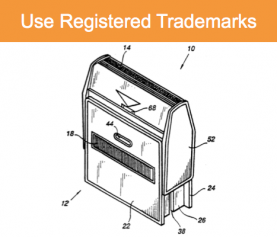Trademark registration benefits – why register?
In the U.S., trademark rights accrue through use of the mark in commerce – click here for for my post on what trademarks and servicemarks are. Why register a mark? There are many trademark registration benefits.
What are the trademark registration benefits?
When you register a trademark with the U.S. Patent and Trademark Office (USPTO), you get the advantage of the many trademark registration benefits. You can register a mark that is distinctive on the “Principal Register” – if you can, you want your mark registered there (see below for the alternative “Supplemental Register”). A person or company who has registered a mark is known as a “registrant.” If your mark is registered on the Principal Register, the trademark registration benefits are:
- Registration discourages anyone else from using or trying to register confusingly similar marks, because they’ll be able to find your trademark registration easily.
- Prevents the USPTO from registering any other confusingly similar marks, because the USPTO must cite your (and any other) prior registrations against any future registration applications. This means that the USPTO will help prevent others from infringing your registered marks.
- A presumption that you are the owner of the registered mark. This is a rebuttable presumption, but it is definitely in your favor.
- Constructive notice to everyone that you claim ownership in the mark. Even if other’s don’t search, they are on notice (meaning they knew or should have known) that you own that mark. No one else can claim that their later adoption of the mark was in “good faith.”
- Serves as evidence that you have the exclusive right to use the mark, across the U.S., in connection with the goods or services described in the registration. After five years, a registration can become “incontestable,” meaning others will have a much more difficult time challenging the registration in court, and likely helping to persuade potential infringers to choose a different mark.
- The presumption that the mark was in use nationwide across the U.S. as of the date the registrant applied for the trademark registration. This is crucial, as our trademark system has a first-use-wins rule.
- Gives the registrant the right to sue infringers of the mark in Federal court.
- In some cases, the registrant can recover, from an infringer, triple damages (meaning three times the amount of proven monetary harm) as a punitive and deterrent measure, as well as attorney’s fees.
- If an infringer is a counterfeiter, you don’t have to prove actual damages – you can collect damages at a level provided for by the law.
- You can (and should!) use the “registered” symbol ( ® ) with the mark, to indicate that the mark has been registered. Note that for an unregistered mark, you cannot use the ® symbol: you must use a superscript TM for goods or a superscript SM for services, indicating that you are asserting that you have a common-law trademark or servicemark, respectively. The ® symbol is better for marketing, and importantly, puts all competitors and potential infringers on notice that you have registered your mark.
- The ability to “record” the mark with U.S. Customs and Border Protection, so that they can block imports that are counterfeit or that infringe your mark, at no additional cost to you. Click here for info from USCBP on how USCBP can help protect intellectual property rights.
- The opportunity to use your registration as a basis for filing foreign trademark registration applications in most other countries, allowing you to protect your brands as you expand your business.
What are the trademark registration benefits of registration on the Supplemental Register?
Marks that are determined by the USPTO to be “merely descriptive” (that is, they describe the goods or services, rather than refer to them with a mark that is, in trademark terminology, “fanciful, arbitrary, or suggestive”) can’t be registered on the Principal Register, but can be registered on the Supplemental Register. Doing so brings some, but not all, of the trademark registration benefits of being on the Principal Register. For instance, registration on the Supplemental Register:
- Does not create a presumption that the mark is valid.
- Does not create a presumption that the registrant is the owner of the mark.
- Does not create a presumption that the registrant has an exclusive right to use the mark.
- Can’t be used to stop the import of counterfeit products or infringing products.
- Can’t become incontestable.
But, registration of a mark on the Supplemental Register does:
- Provide notice to all that the registrant asserts ownership of the mark. Anyone who conducts a trademark search, to minimize trademark infringement problems, can easily find the mark.
- Allow the registrant to use the ® symbol.
- Enable the USPTO to block future registration applications that are for confusingly similar marks.
And, if a mark registered on the Supplemental Register acquires distinctiveness, meaning it becomes suggestive or arbitrary with relation to the goods or services on which it is used, the registrant can file a registration application to try to register the mark on the Principal Register, to take advantage of the greater trademark registration benefits. In principle, if a mark became fanciful, that could also be done – but it’s hard to imagine how a mark that isn’t already fanciful could become fanciful!
Under some conditions, a mark that someone has applied to register can become dead or abandoned – click here for my post on registering or using a dead trademark.
Have questions?
Considering registering a mark? Do you have other questions? Call me at 617-340-9295 or email me at my Contact Me page. Or, find me on Twitter, Facebook, Google+, LinkedIn, Google Local, or Avvo.






